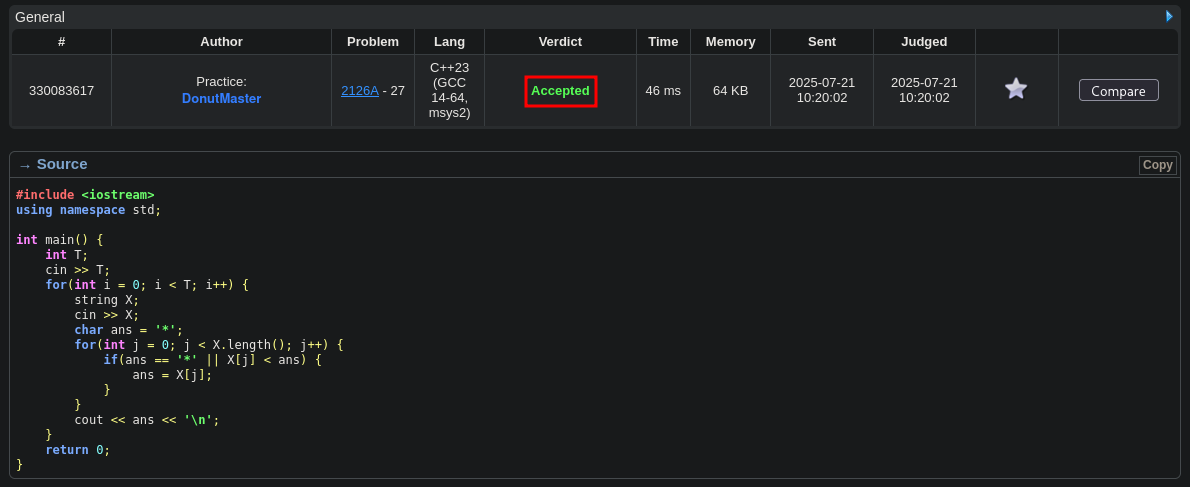Codeforces Round 1037 Problem A "Only One Digit"
Solution for coding problem "Only One Digit"
Link: https://codeforces.com/contest/2126/problem/A
Time limit per test: 1 second
Memory limit per test: 256 megabytes
Problem description
You are given an integer X. You need to find the smallest non-negative integer y such that the numbers x and y share at least one common digit.
In other words, there must exist a decimal digit d that appears in both the representation of number x and number y.
Input
The first line contains an integer t (1 ≤ t ≤ 1000) — the number of test cases.
The first line of each test case contains one integer x (1 ≤ x ≤ 1000).
Output
For each test case, output one integer y — the minimum non-negative number that satisfies the condition.
Example:
Input:
1
2
3
4
5
6
5
6
96
78
122
696
Output:
1
2
3
4
5
6
6
7
1
6
Note
In the first test case, the numbers 6 and 6 share the common digit 6. Moreover, there is no natural number smaller than this that shares a common digit.
In the second test case, the number 6 and 96 share the common digit 6.
Approach
When trying to find the number y, we can see that y never has to be larger than a one digit number. Let’s take the case when x is 75 for instance. If we choose y as 67, x and y both share the digit 7.
However, as you can see, if they share the digit 7 y doesn’t need the digit 6. Therefore, using this example, we have proven that y will always be a one digit number.
Now, we need to choose one of the digits that appear in x that will be y. We can simply choose the smallest digit that appears in x, and that will be our answer.
Code
1
2
3
4
5
6
7
8
9
10
11
12
13
14
15
16
17
18
19
#include <iostream>
using namespace std;
int main() {
int T;
cin >> T;
for(int i = 0; i < T; i++) {
string X;
cin >> X;
char ans = '*';
for(int j = 0; j < X.length(); j++) {
if(ans == '*' || X[j] < ans) {
ans = X[j];
}
}
cout << ans << '\n';
}
return 0;
}
Lines 1-2: imported all libraries needed and used the namespace std
Lines 5-6: initializes T (test cases) and inputs them in
Line 7: starts a for loop for the number of test cases
Lines 8-9: initializes and inputs in X
Lines 10-15: finds the smallest existing digit inside X
Line 16: prints out the answer
Then, the code continues this process from lines 8-16 for all other test cases.
